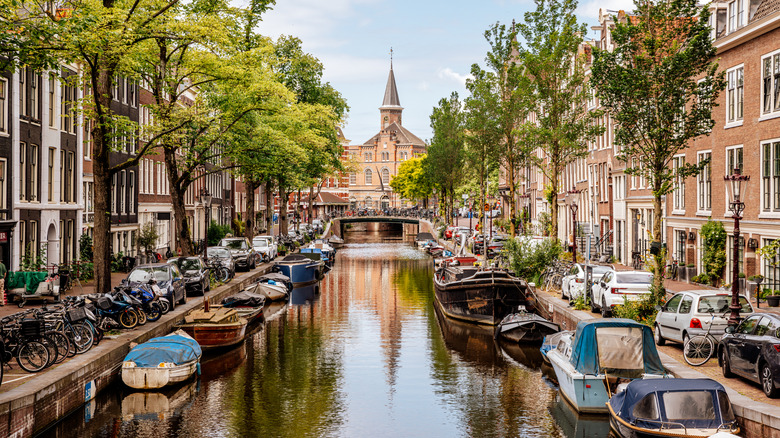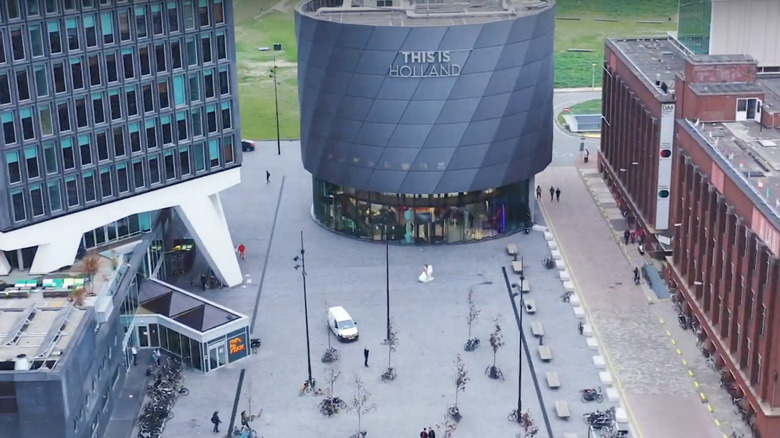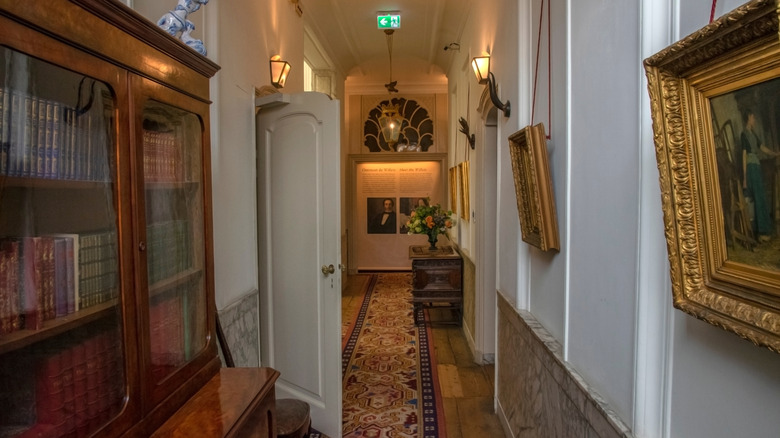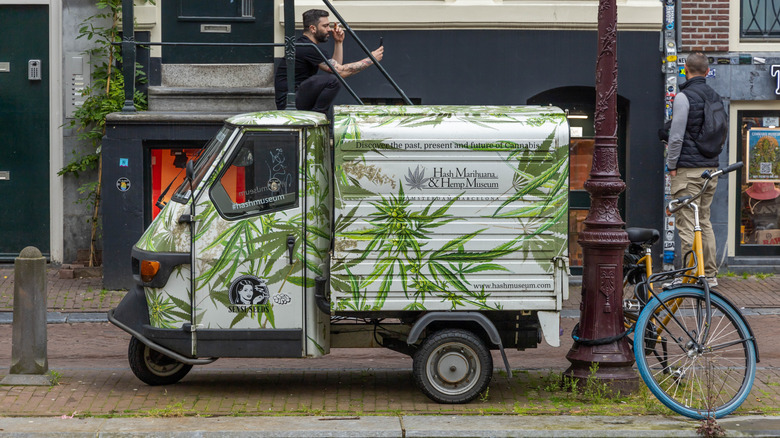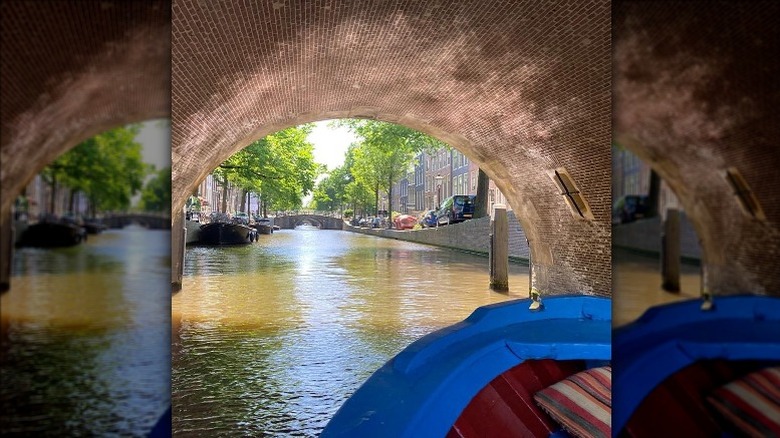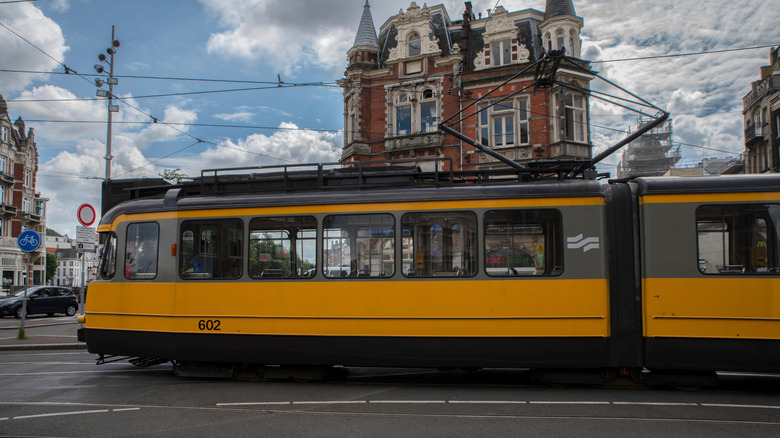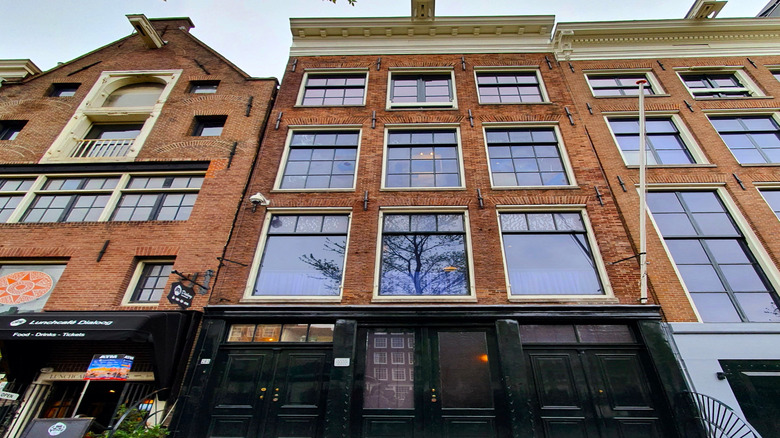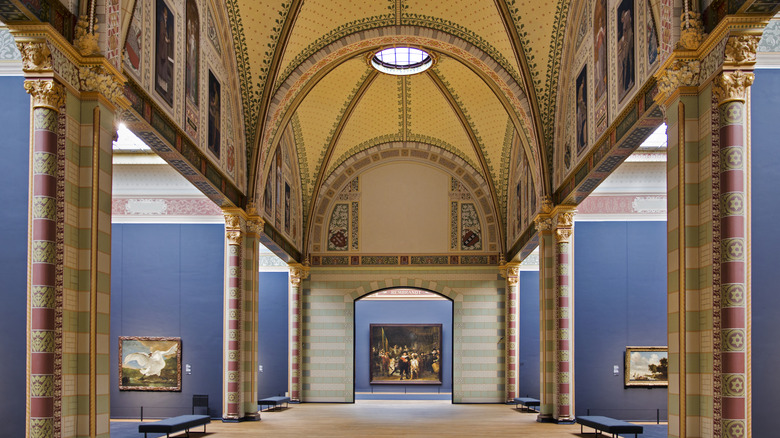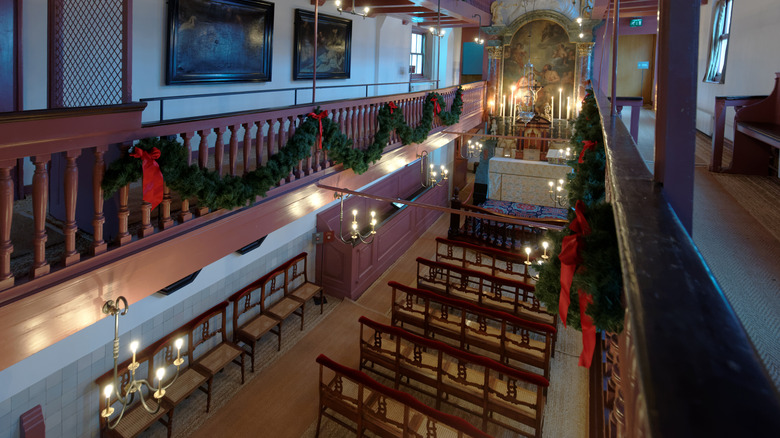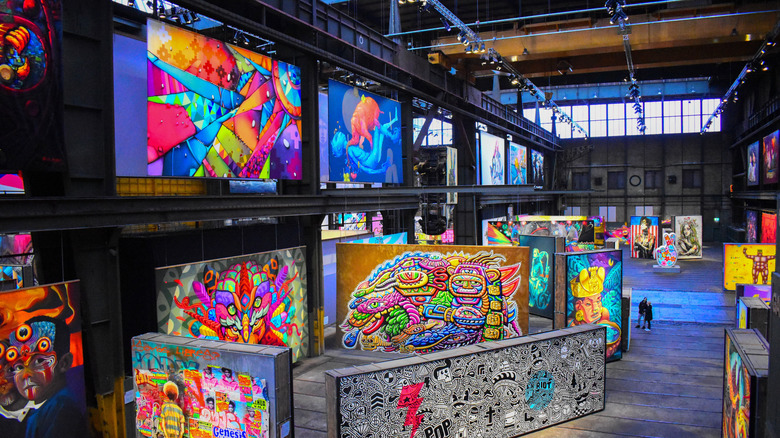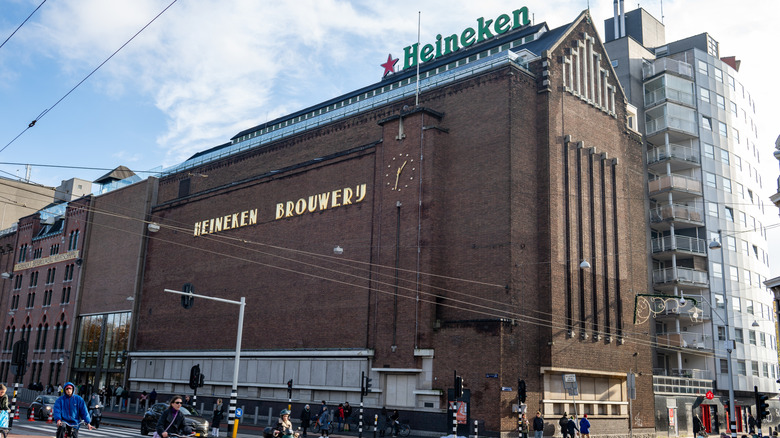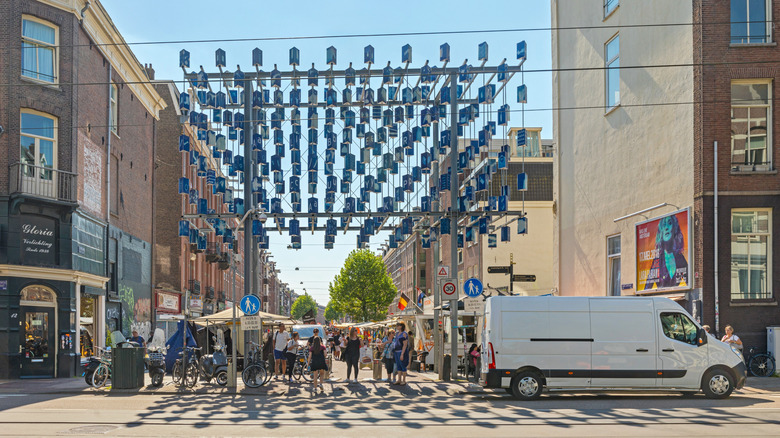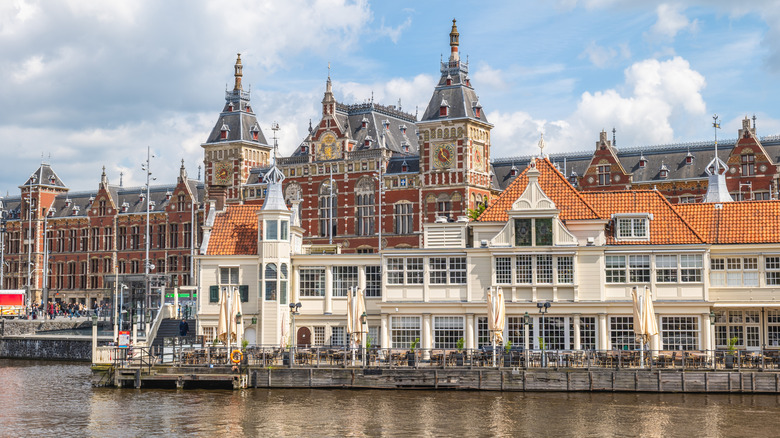15 Of The Best Experiences You Can Only Have While In Amsterdam, According To Travelers
Where to start with the Dutch capital? A port settlement known for its scenic beauty, Amsterdam has been around for over seven centuries, and makes a great city to take day trips from. Dissected by canals and linked by bridges, it almost feels like a series of islands stitched together. This is a beautiful place to wander, either on foot or by bicycle, as many of the locals do, so make sure to pack comfortable shoes for your Amsterdam trip.
Tourists can admire the scores of houseboats, many of them lived in by their owners. And around the city, there is no shortage of culture, including world-class museums and performing arts. Amsterdam has much to offer, from cool neighborhoods to great dining, but that could be said of any great global city. What it can provide visitors is a host of special experiences unique to the buzzing, historic, picturesque Dutch metropolis. Using traveler blogs, we've found some of the best.
1. Visit the entire country in nine minutes
Due to its status as the capital of the Netherlands, most overseas travelers will fly into Amsterdam when they visit the country. As it turns out, you don't actually need to leave the city to see the nation. This is Holland, an attraction in Amsterdam with a 4.7 user rating on Google from thousands of reviews, features four special segments that explore the riches of the northwestern European country.
The highlight of the approximately one-hour program is the nine-minute ride, a 5D experience that simulates flying over the entire country. You'll learn how the nation of 18 million people formed, despite the fact that much of it sits below sea level. Visitors will also find out how the locals reclaimed and shored up land using a system of mounds, dykes, and windmills. Participants view all of this while seated under a huge screen shaped like a dome, with images filling every direction.
2. Learn about the Netherlands' iconic flower in its home
No bloom screams "the Netherlands" more than the tulip, and Amsterdam visitors can learn all about the flower at the Tulip Museum. Situated in a canal house in a part of the city known as Jordaan, the attraction is a quick stroll from the main train hub, Centraal Station. You'll discover interactive displays and exhibits, some created by Dutch artists, that explore the origins of the waxy-petaled bloom.
For instance, did you know that the tulip originally came from the lower reaches of the Himalayas, and was transported to the Ottoman Empire to grace the gardens of a sultan? The flower arrived in the Netherlands during the era when Amsterdam was a hub for commerce and art, and the rest is history. The museum charges an admission fee, though you don't have to pay it to visit the gift shop, a trove of tulip-accented knick-knacks like aprons, totes, plates, and jewelry. After a visit, travelers can buy some real tulips at the Bloemenmarkt, a flower market set on canal barges.
3. Meander around a park named for a Dutch master
It's not often that you hear of parks being named for artists, but Rembrandtpark in Amsterdam's west stands out as a shining example. It takes its moniker from Rembrandt Harmenszoon van Rijn, more commonly known by his first name. A painter from the 1600s known for his deft use of shade and light, his works often embraced real-life, everyday subjects. The park itself isn't large, a few blocks wide and somewhat longer, but it's a peaceful spot with lakes and channels of water.
Rembrandtpark features bike lanes that criss-cross the greenery, gardens that belong to schools, and playgrounds for kids to let off some steam. Another attraction for youngsters is De Uylenburg, the oldest petting zoo in the city. Reaching the destination is easy by bike, or you can leisurely stroll over from the Rijksmuseum in around 40 minutes.
4. Peek inside a canal home that's a snapshot from centuries ago
Venice, a city of many well-known highlights, might be more famous for its canals, but those in Amsterdam feel less primed for tourists and more like a part of daily life in the capital city. The canal houses that link the banks of the waterways are pretty and pricey (one with six bedrooms sold for more than $3 million in 2024). But you don't have to just admire them from the outside. For a peek within, visit the Willet-Holthuysen House, a home-turned-museum that is a beautiful representation of a living space from the late 19th century.
Rooms throughout the house reflect the period; upon walking into them, tourists can sense the deep history, taste, and opulence of the era. Visitors can also take in the (often modern) pieces of a rotating exhibition staged throughout the home, which creates a unique if occasionally controversial contrast. If you happen to visit the city on the third weekend in June, you're in for a special treat. At that time, around 30 private gardens behind canal houses that aren't visible from the street open to the public in an event known as Open Garden Days.
5. Learn all about weed at the oldest cannabis museum in the world
The Hash Marihuana & Hemp Museum actually has two locations — one in a canal house in the heart of the Dutch capital, and another in a grand building in Barcelona. But the location in Amsterdam, opened in 1987, is the original, and also the oldest in the world that focuses on the subject of marijuana, a plant that's become legal to use in many U.S. states but that you still can't take on a cruise ship.
The items displayed aren't just different types of weed, but also pieces that are part of cannabis culture and tradition. These include paintings and prints of people smoking, pipes, cannabis bottles that were prescribed as medicine in the 1800s, and more from a collection that is more than 9,000 pieces strong. Visitors will even learn how, even though cannabis has been produced for centuries, the period from 1837 to 1937 was considered the Golden Age of Medicinal Cannabis.
6. Take a tour on an actual migrant boat led by refugees
Canal cruises are a staple in Amsterdam, and a great way to see the city from its arterial thoroughfares. But those operated by Rederij Lampedusa, which has a 5-star rating on Google and Tripadvisor, are different. Not only do they take place on actual migrant boats that were used in the Mediterranean Sea, but they are led by real refugees to the Netherlands. The crew hails from the Middle East and East Africa, with countries including Syria, Eritrea, and Somalia. The onboard guide is a fount of information on Amsterdam, including its canals and history.
You'll also learn the story of the boat you travel on, either the "Hedir" or the "Alhadj Djumaa," a vessel that started its journey to Europe from the coast of Egypt in 2013 before being intercepted by Italian authorities. Along the way, travelers will likely pass many houseboats. You can round out your experience and find out more about this city mainstay with a visit to the Amsterdam Houseboat Museum. Set within an old cargo ship, it relays what it's like to live in one of these floating homes.
7. Have a drink in an ice glass at the North Pole
You might have guessed by now that you won't physically visit the North Pole while in Amsterdam. Instead, the theme at the Amsterdam Icebar recreates a polar expedition; with a little imagination, you can believe you're heading to that global extremity. Those who visit this spot become part of a story centered on a Dutch boat winding its way up the Northeast Passage high up in the Arctic Circle.
The recreated trip takes inspiration from the travails of the Dutch pioneer Willem Barentsz, who found himself stuck in the North Pole more than four centuries ago.You don't need to worry about such disaster befalling you, but you will encounter cold temperatures. The adventure reenacts Barentsz's time close to the island of Nova Zembla in 1596, and the ice bar is -10 degrees Celsius (about 14 degrees Fahrenheit), though the staff provide guests with warm clothing and gloves to wear. Of the two bars in the facility, one is frigid cold, with glasses made of literal ice.
8. Board a historic tram that's also a museum of sorts
Trams are a common feature in many cities around the world; for example, in the country of Luxembourg, they are free, like all its public transport. A seasonal tram in Amsterdam, however, is truly distinct. Tram Line 30 only operates on Sundays from July through October, and riding it feels like stepping back in time. Shuttling between Amsterdam and Bovenkerk, south of the city center, it's not only a mode of transport, but also a kind of museum.
Step onboard and you'll notice the gleaming teak interiors and imagine this is how people traveled a century ago. Conductors dress in old, traditional uniforms, and tickets can be purchased on the tram. Watch as staff use an old-fashioned money changer during the ticket-buying transaction. The full trip, little more than 4 miles in length, passes along forests and parks, with many places along the way to stop for a bite to eat.
9. See where Anne Frank hid
The story of Anne Frank might be a familiar to many people, but it's still worth recounting. Born in Germany in 1929, Frank and her family moved to Amsterdam to escape the rise of Hitler and his scapegoating of Jews as the cause of Germany's problems. During World War II, the Nazis took control of the Netherlands and started to impose restrictions on Jews. When it appeared that Jews were to be shipped off to camps, the Frank family went into hiding.
Frank's father created an undisclosed space in the building where he ran his business, an area known as the Secret Annex.Frank hid in this space for two years, and kept a diary during that time. The personal account described daily occurrences, as well as the thoughts going through Frank's mind during this impossible time. Frank was eventually captured and taken to a concentration camp, but her diaries survived and were later published around the world. The Anne Frank House, now a museum in Amsterdam, showcases Frank's tale and her written works as part of an ongoing effort to raise awareness about racism and discrimination. To avoid extensive queues, follow Rick Steves' pre-travel tip and make reservations for the Anne Frank House long before you arrive in the city.
10. Enjoy Dutch art at its best
Two world-class museums in Amsterdam celebrate Dutch artistic genius — the Rijksmuseum and the Van Gogh Museum. The former is possibly the most famous art museum in the Netherlands, with more than 8,000 pieces that explore Dutch creativity throughout the centuries. There are works by iconic painters, such as a self-portrait by Rembrandt and Vermeer's famous canvas, The Milkmaid. The building itself is quite a beauty, with a Great Hall that dazzles through its huge section of stained-glass windows.
The Cuypers Library in the museum, the oldest art history library in the country, is also a sight to behold thanks to its spiral staircases, a curved glass ceiling, and books stacked on shelves across multiple floors. If you don't get a chance to visit the museum, there is free outpost of it at the city's Schiphol airport open round the clock. For even more art, head to the Van Gogh Museum, which honors another Dutch great. You can see the show stopping "Sunflowers" painting, along with some of the artist's letters and sketches.
11. See a museum where the works depict only cats
For feline fans, this is one not to miss. KattenKabinet focuses on all things catty, including sculptures, drawings, paintings and other mediums. The works aren't done by art students or budding newcomers that nobody has really heard of, but feature some of the great names in art. Travelers will find pieces by the likes of Pablo Picasso, Henri de Toulouse-Lautrec, and even local master Rembrandt. The setting, a canal house in one of the prettiest parts of the city, is worth a visit, too. While at the museum, you might even see some of the cats that live onsite.
Elsewhere, you can admire more live cats. The Catboat is a feline sanctuary that sits on the water, giving stray cats and those no longer wanted by their previous owners a place to feel safe and loved. In operation since 1968, it's open to visitors and provides an opportunity to both learn about the history of the refuge and interact with some of the purring residents.
12. Pray in a perfectly preserved elevated church
Museum Ons' Lieve Heer op Solder, or Our Lord in the Attic, takes its name from its location. Yes, it really is a church in an attic, built on the top floor of a 17th-century canal house. What's even more remarkable about this unique site is that the interiors are so finely intact, making visitors feel like they are traveling back to the 1600s. Access to the church is via tight corridors and stairs which pass by the home's main living space.
You'll see the kitchen and the rooms where the residents lived before coming to the pièce de résistance: the church. The place of worship spreads across three neighboring homes, with some parts added in the 1700s. This includes the altar, installed around 1715; meanwhile, paintings above it add extra theater to the focal point. While this is a museum first and foremost, it is also a venue where weddings, meetings, and lectures are held.
13. Enjoy not one, but two street art museums
Straat is a museum dedicated to the gritty, urban genre of street art and graffiti. Think of bold names like Keith Haring and Banksy mixed in with new works by upcoming street artists. In fact, there are almost 200 pieces of art on display at the museum, the output of almost as many artists, and much of it was made onsite. Pieces range in size from intimate to large enough to cover an entire building wall. The museum sits within a former warehouse on an old wharf, lending the physical space even more street cred.
Equally exciting is Moco Museum, where contemporary works include street art. It has three locations — Amsterdam, Barcelona, and London, which opened in August 2024 — though the Dutch one was the first to hit the scene in 2016. You'll be able to pore over pieces by Jean-Michel Basquiat, Jeff Koons, Yayoi Kusama, and more whimsy from Banksy. The museum is situated in a townhouse between the Rijksmuseum and Van Gogh Museum.
14. Get a Heineken right from the source
Heineken beer was the brainchild of Gerard Adriaan Heineken, who purchased a brewery in 1864 at the age of 23 and meticulously introduced the latest methods to its processes. The brewery began proper operations in 1873 in the middle of Amsterdam, and Heineken gave the beer his family name. Fast-forward to today, and Heineken is a globally recognized brand available throughout the planet.
Visitors can get the inside scoop on all this lore, as well as how the beer is made, at the Heineken Experience. The tours take place in the original former brewery. Heineken stopped producing its golden nectar there in 1988, but the history of the fabled building is very much alive. On a tour, you might even find out what groundbreaking innovations Heineken implemented and the significance of the star in the logo.
15. Wander around one of the largest markets in Europe
The Albert Cuyp Market is a huge draw for locals and tourists and features more than 250 stalls that sell everything from fresh fruit and vegetables to flowers and fabric. It started in 1905 in a bustling part of the city called De Pijp that's easy to get to (it's only a five-minute walk from the Heineken Experience). Open six days of the week, the market is filled with noise, lively banter between vendors and buyers, and many different types of items for sale.
In addition to the fresh fare available, visitors can order that famous Dutch sweet treat, the stroopwafel. A mix between a waffle and cookie, it's two circles of baked dough that hold sweet syrup in between. At the market, you can order one fresh and hot — a great way to perk yourself up when your energy flags from perusing all those stalls.
Methodology
Amsterdam, a great global city, has no shortage of things to see and do. We curated this list by pouring over blogs like Get Your Guide and Nomadic Matt. We opted to discount experiences that were worth doing but not unique to the Dutch capital in key ways. Once we finalized the short list, we researched each choice meticulously to ensure that the experiences were really worthwhile by looking at resources such as traveler reviews.
